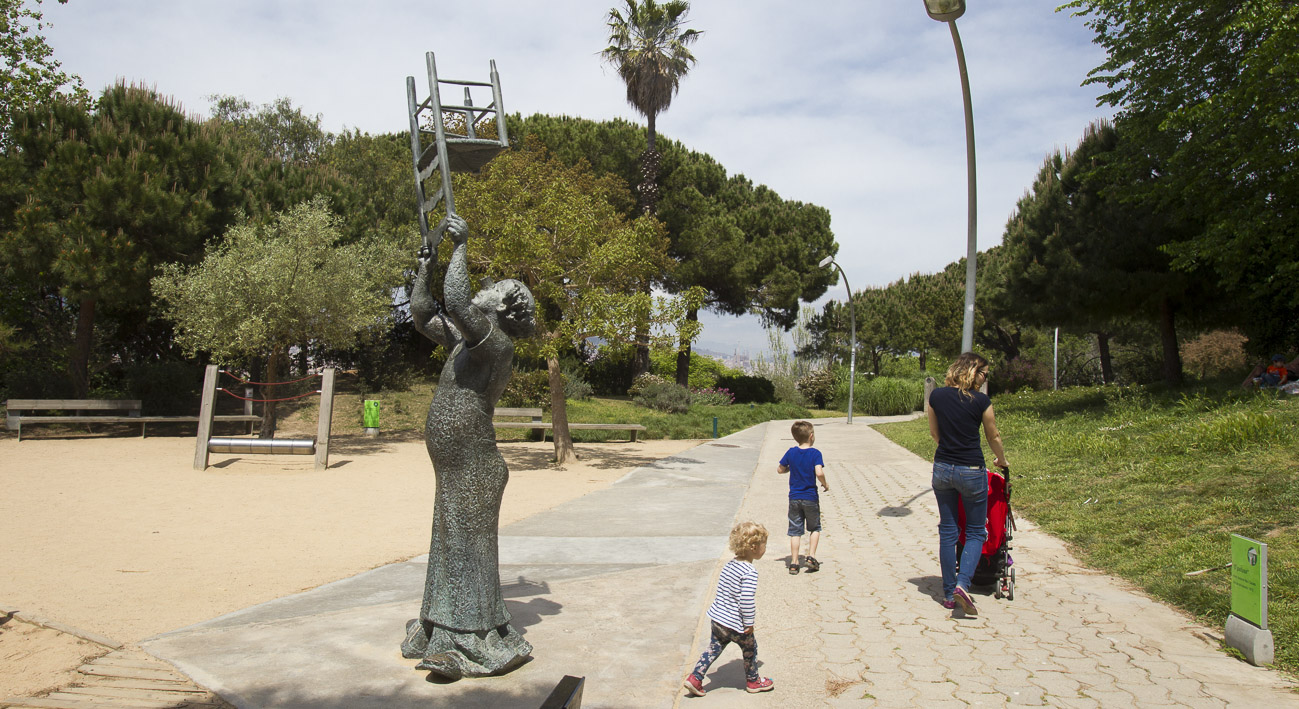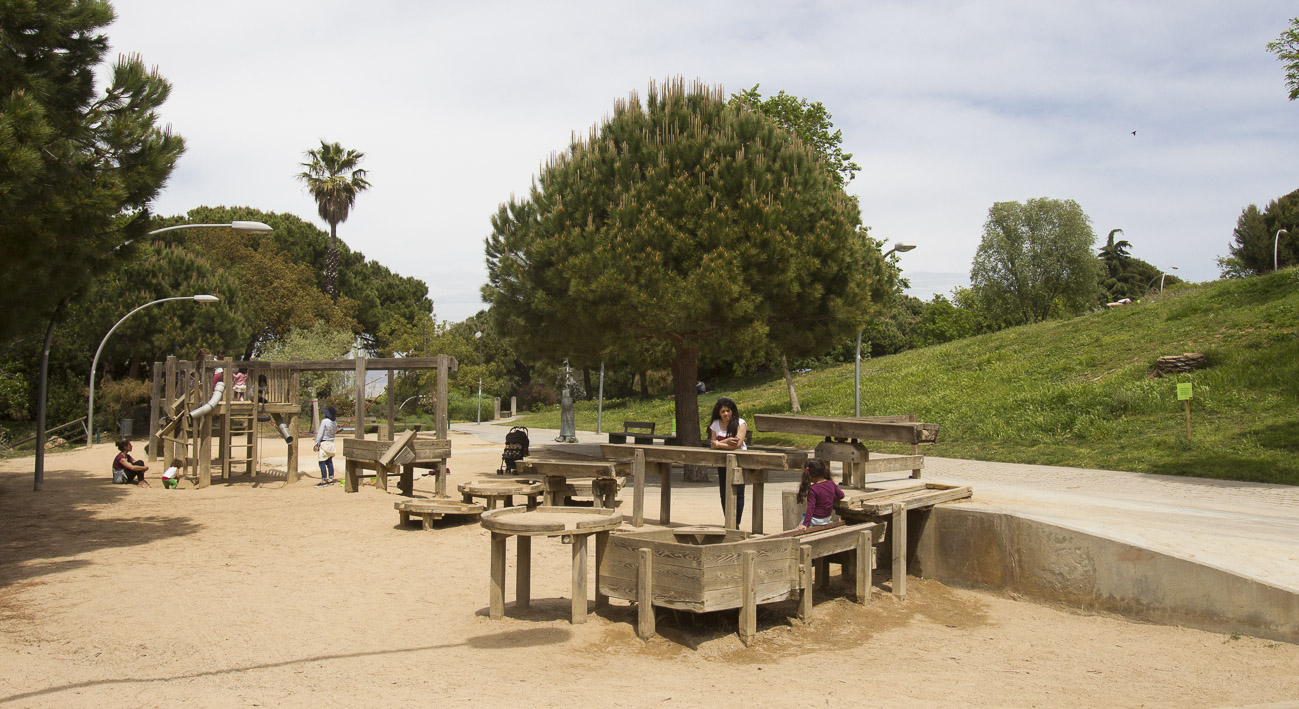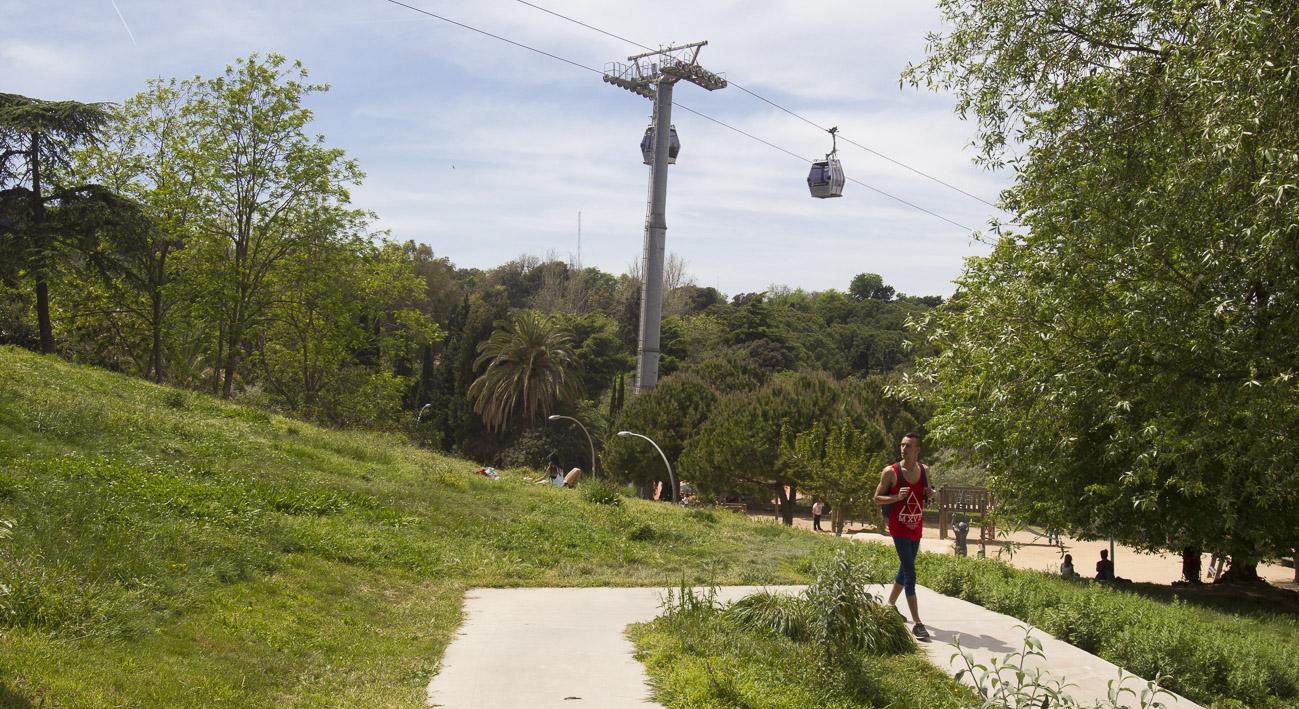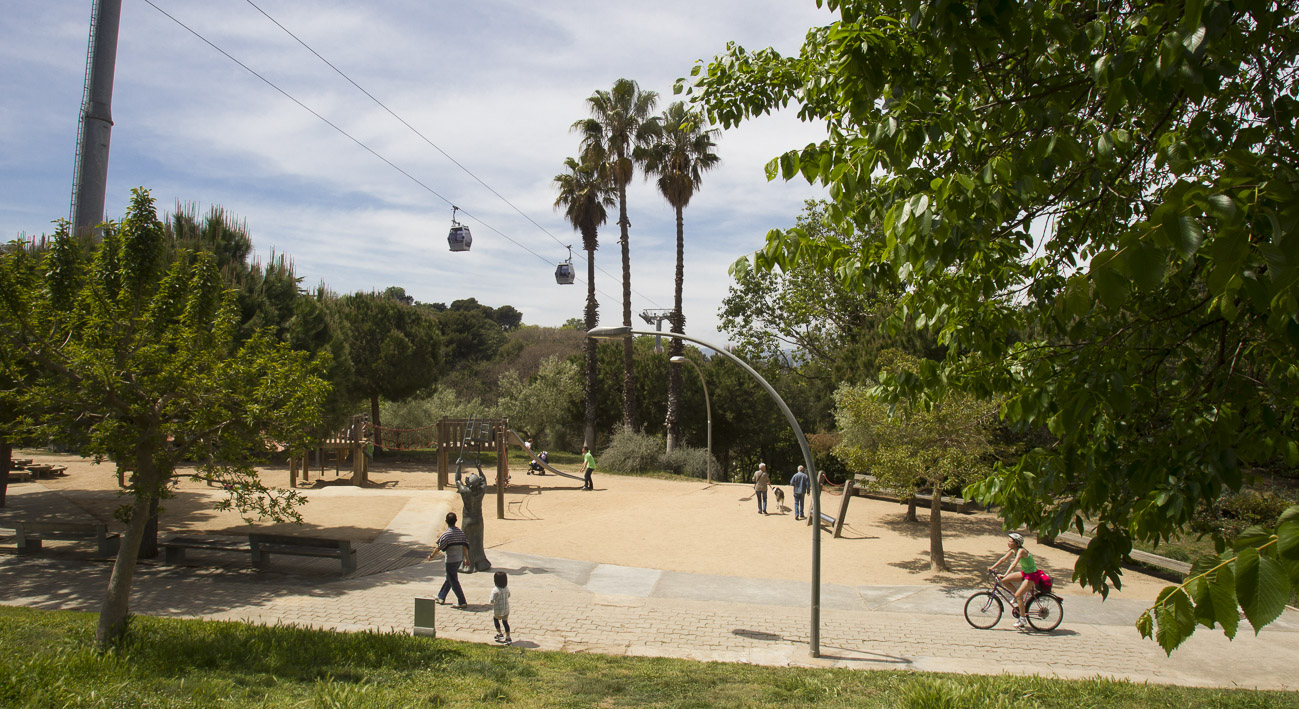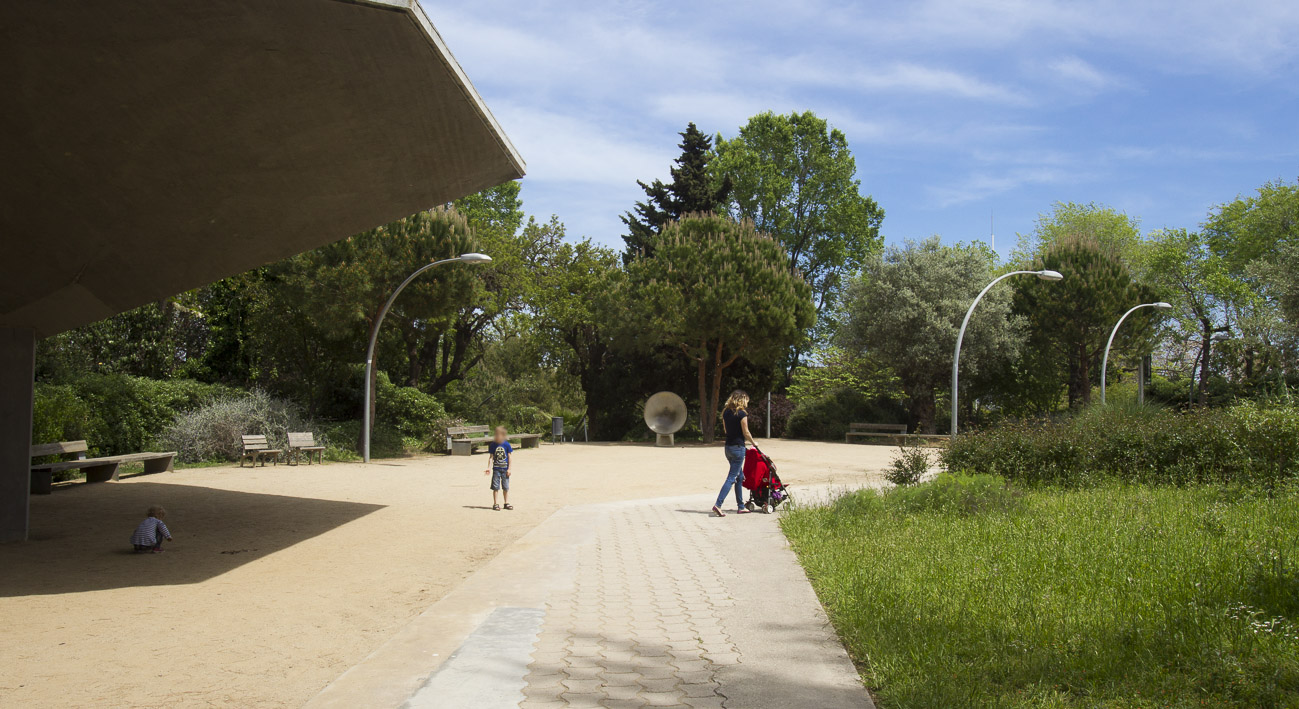What was the Montjuïc Amusement Park for over 30 years are now a large green space covered with luxuriant and typically Mediterranean vegetation. The Jardins de Joan Brossa invite you to take a stroll, rest a while or play. It is well worth spending a day of leisure there, surrounded by a natural and leafy landscape, offering sunny as well as shaded areas and magnificent views of Barcelona.
It may not be part of the gardens but there is a huge esplanade just above them, where you will find a bar and several picnic tables too. You can reach it through a small access point at the top of the gardens.

History
These gardens are spread over much of the site occupied for 32 years by the Parc d’Atraccions de Montjuïc. There had already been another amusement park, the Maricel, at the top end from 1930 to 1936. In fact, between 1898 and 1965, before the later park was built, this part of the mountain had been put to military use. The detachment of the Álvarez Castro coastal defence battery, built by Spain’s war ministry during the Cuban War, was based here. Barcelona City Council requested the land from the army in 1964 and the military facilities were pulled down in 1965. The amusement park was built in 1966 and reached its heyday in the 1980s, boasting over thirty attractions and an open-air amphitheatre where concerts performed by famous singers and groups of the time were held every year.
The park fell in to decline towards the end of the 1990s and the municipal concession for its use of the land there came to an end. Proposals for a new concession failed and the park finally closed in 1998. In 2000 Barcelona City Council decided to create the current public gardens there, which allowed much of the upper part of Montjuïc to be renovated and given a new layout.

Art and Architecture
Art is represented in the gardens by poetry and sculpture. They are named after the poet Joan Brossa, in line with the tradition of dedicating Montjuïc’s gardens to Catalan poets. There is a plaque at the main entrance, in Plaça de Dante, citing his poem Música d’arpa (Harp music). As for sculptures, four have been preserved from the old amusement park: Joaquim Ros i Sabaté’s El pallasso (The Clown, 1972), which depicts Charlie Rivel lifting his famous chair; Josep Cañas’ Carmen Amaya (1966), a tribute to this Barcelona-born flamenco dancer; Núria Tortras’s Charlot (1972), with Charlie Chaplin climbing on top of a globe, and Nicolau Ortiz’s Joaquim Blume (1966), depicting a gymnast exercising with Olympic rings in the background.
Two of the buildings constructed in the old amusement park in 1965 have also been preserved. The first is the Damm kiosk, the brewery’s bar restaurant, which soon became the amusement park’s most popular and iconic circular building. It has been restored and is currently a venue for holding celebrations and conventions. The second, the amusement park’s Bar Fanta, is the Para-Sol building, made of concrete and curiously shaped like an umbrella. Now it is a decorative feature of the gardens, which basically consists of a platform made up of five areas that meet together at the centre, supported by a single column. In other words, an immense parasol much appreciated on hot days.
-
- Phone number
- Tel.: 010
-
- Accessibility
- Accessible for people with physical disabilities
-
- Titularity
- Public center
- Address:
- Plaça de Dante, 9999
- Districte:
- Sants-Montjuïc
- Neighborhood:
- el Poble-sec
- City:
- Barcelona
Timetable
| Periode | Dies | Hores | |
|---|---|---|---|
Horari d'hivern de l'1 de novembre al 31 de març |
Cada dia | de 08.00 h a 19.00 h | |
Horari d'estiu de l'1 d'abril al 31 d'octubre |
de 08.00 h a 21.00 h |
aproximada, en funció de
l'horari solar (tanquen
quan es fa fosc, al capvespre)
- Part inferior de l'espai que ocupava l'antic parc d'atraccions de Montjuïc.- Accessos: pl. Dante (av. Miramar, 30; recomanada per ser la més propera al funicular), carrer dels Tarongers, pl. de la Sardana, ctra. Montjuïc.

